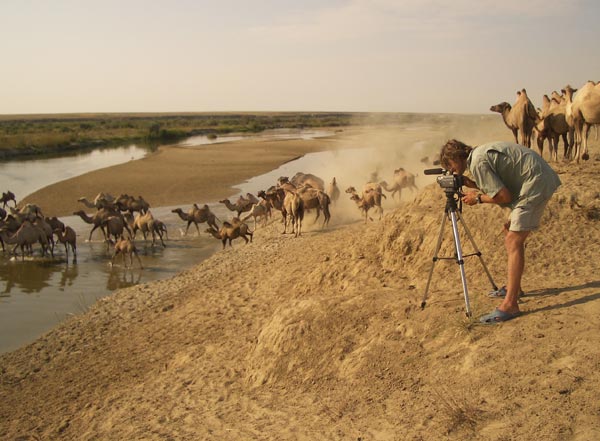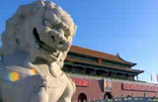Tales of a nomad
Updated: 2015-04-01 07:07
By Belle Taylor(China Daily)
|
|||||||||||
 |
|
Tim Cope spent four years traveling from Mongolia to Hungary. Photo provided to China Daily |
What he discovered was a wild land of dramatic geographical differences and legacies of the caravans that once traveled these paths along what became known as the Silk Road, the East-West trade link that thrived under the rule of Genghis Khan, founder of the mighty Mongol Empire.
Cope's journey turned into a book, On the Trail of Genghis Khan: An Epic Journey Through the Land of the Nomads, a rollicking read that takes the reader through deserts, villages, boiling hot summers, freezing winters and all the wonders of the Eurasian steppe. It was published in 2013.
But as compelling as the book is, no one undertakes a four-year journey under such challenging conditions just to write about it. Cope is a born explorer, the winner of the National Geographic 2006 Australian Adventurer of the Year award. His drive to travel comes from a desire to gain a deeper understanding of history and human nature.
"The whole point of the journey was to see if there still are connections between those cultures," Cope says, referring to the peoples of the steppes. "Because of that East-West route they have a lot in common traditionally, but a lot of that was kind of affected in (the) Soviet times and that since broke into a lot of independent states, so my question was, does that connection still exist?"
His verdict? It does, but not in the tangible form of ancient cities and religious sites that so often become magnets for historians. He says he found connections across the steppe in unlikely places-like the best way to tie a knot.
"On the fifth day of the journey, just before my horses were stolen for the first time, I was taught this really interesting knot, how to tie up the horses," Cope explains. "It was called the Mongol knot. And then in Kazakhstan I was able to do the knot and they said, 'how do you know that knot? That's a Kazakh knot', and when I arrived in Crimea they called it the Tartar knot and then in Hungary they said 'that's the Hungarian knot but no one knows it beyond the Danube,' and beyond the Danube is where the steppe ends, that's where you reach contemporary Europe and a lot of these traditional Silk Trading routes petered out."
Cope now lives in Australia, in rural Victoria but the wide road is never far from his mind. He says he would love to see more of China, particularly the west of the country, where he can walk in the footsteps of the ancient explorers that came before him.
Related Stories
China makes positive impression in Bologna fair's children's book market 2015-03-31 09:04
Book on Chinese relics abroad launched 2015-03-27 14:44
Biography of Indonesian President Jokowi formally launched in Beijing 2015-03-27 10:20
Book on the country's last monkey trainers 2015-03-25 08:58
Venezuela Int'l Book Fair attracts Chinese exhibitors 2015-03-23 09:46
Today's Top News
Lufthansa insurers set aside $300 mln over crash
Sarkozy makes political comeback
30 nations approved as AIIB founding members
China's PMI eases past 50 in March
Crash pilot had been treated for suicidal tendencies
Britain officially launches general election campaign
China's GDP growth likely to rise to 7.2% in Q2
Yili Group milks world of industry experience
Hot Topics
Lunar probe , China growth forecasts, Emission rules get tougher, China seen through 'colored lens', International board,
Editor's Picks

|

|

|

|

|

|





